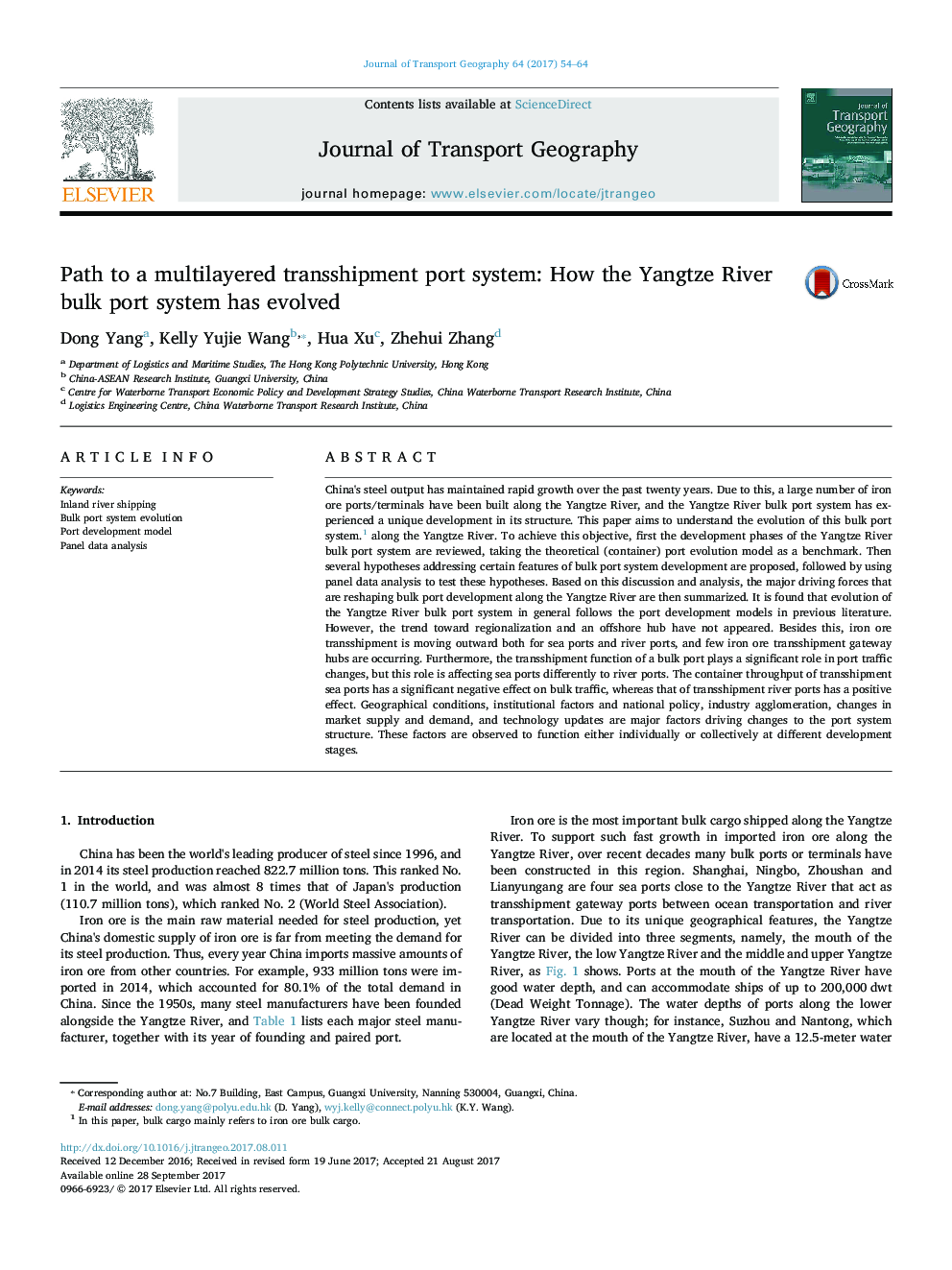| کد مقاله | کد نشریه | سال انتشار | مقاله انگلیسی | نسخه تمام متن |
|---|---|---|---|---|
| 5117457 | 1485403 | 2017 | 11 صفحه PDF | دانلود رایگان |
- Review the evolution process of the Yangtze River bulk port system and propose a five-stage development model;
- Compare and recognize the differences of evolution path between bulk port system and container port system;
- Summarize four forces driving changes to the bulk port system structure;
- Enrich the theoretical port development model.
China's steel output has maintained rapid growth over the past twenty years. Due to this, a large number of iron ore ports/terminals have been built along the Yangtze River, and the Yangtze River bulk port system has experienced a unique development in its structure. This paper aims to understand the evolution of this bulk port system.1 along the Yangtze River. To achieve this objective, first the development phases of the Yangtze River bulk port system are reviewed, taking the theoretical (container) port evolution model as a benchmark. Then several hypotheses addressing certain features of bulk port system development are proposed, followed by using panel data analysis to test these hypotheses. Based on this discussion and analysis, the major driving forces that are reshaping bulk port development along the Yangtze River are then summarized. It is found that evolution of the Yangtze River bulk port system in general follows the port development models in previous literature. However, the trend toward regionalization and an offshore hub have not appeared. Besides this, iron ore transshipment is moving outward both for sea ports and river ports, and few iron ore transshipment gateway hubs are occurring. Furthermore, the transshipment function of a bulk port plays a significant role in port traffic changes, but this role is affecting sea ports differently to river ports. The container throughput of transshipment sea ports has a significant negative effect on bulk traffic, whereas that of transshipment river ports has a positive effect. Geographical conditions, institutional factors and national policy, industry agglomeration, changes in market supply and demand, and technology updates are major factors driving changes to the port system structure. These factors are observed to function either individually or collectively at different development stages.
Journal: Journal of Transport Geography - Volume 64, October 2017, Pages 54-64
